OysterCatcher Winter 2023

An Event to Remember
The Reserve had its very first “Flight of the Monarchs” event on Thursday November 9th. Over 200 people attended, and the reviews were sparkling. The goal of the event was to inform the public about monarch butterflies, to tell the story of their long migration to their overwintering site in central Mexico, and to celebrate decades of the annual tagging of the butterflies at the Reserve. Activities included planting native milkweed, live monarch life cycle exhibits, tagging demonstrations, releasing of tagged butterflies in the garden, and three showings of the film “Flight of the Butterflies”. There were also kid games like pin the tag on the monarch, button making and face painting. Through this event, visitors learned the different conservation measures that are in place to protect this species and how they can be active stewards for monarchs and the monarchs’ ecosystems. We plan on hosting this event every other year.
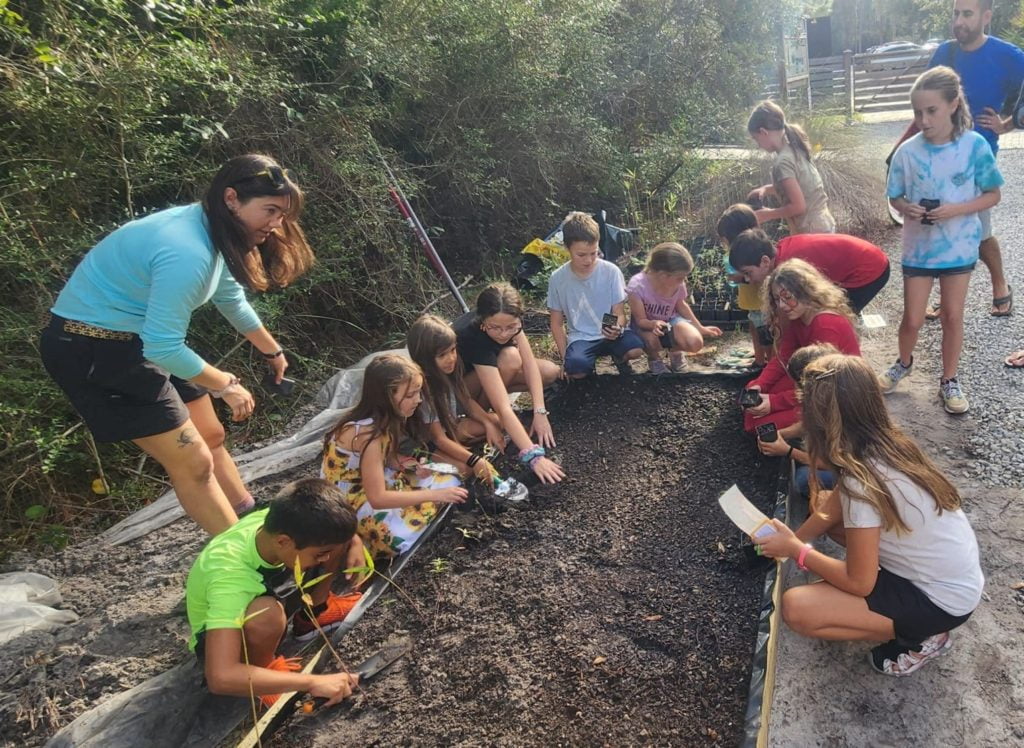
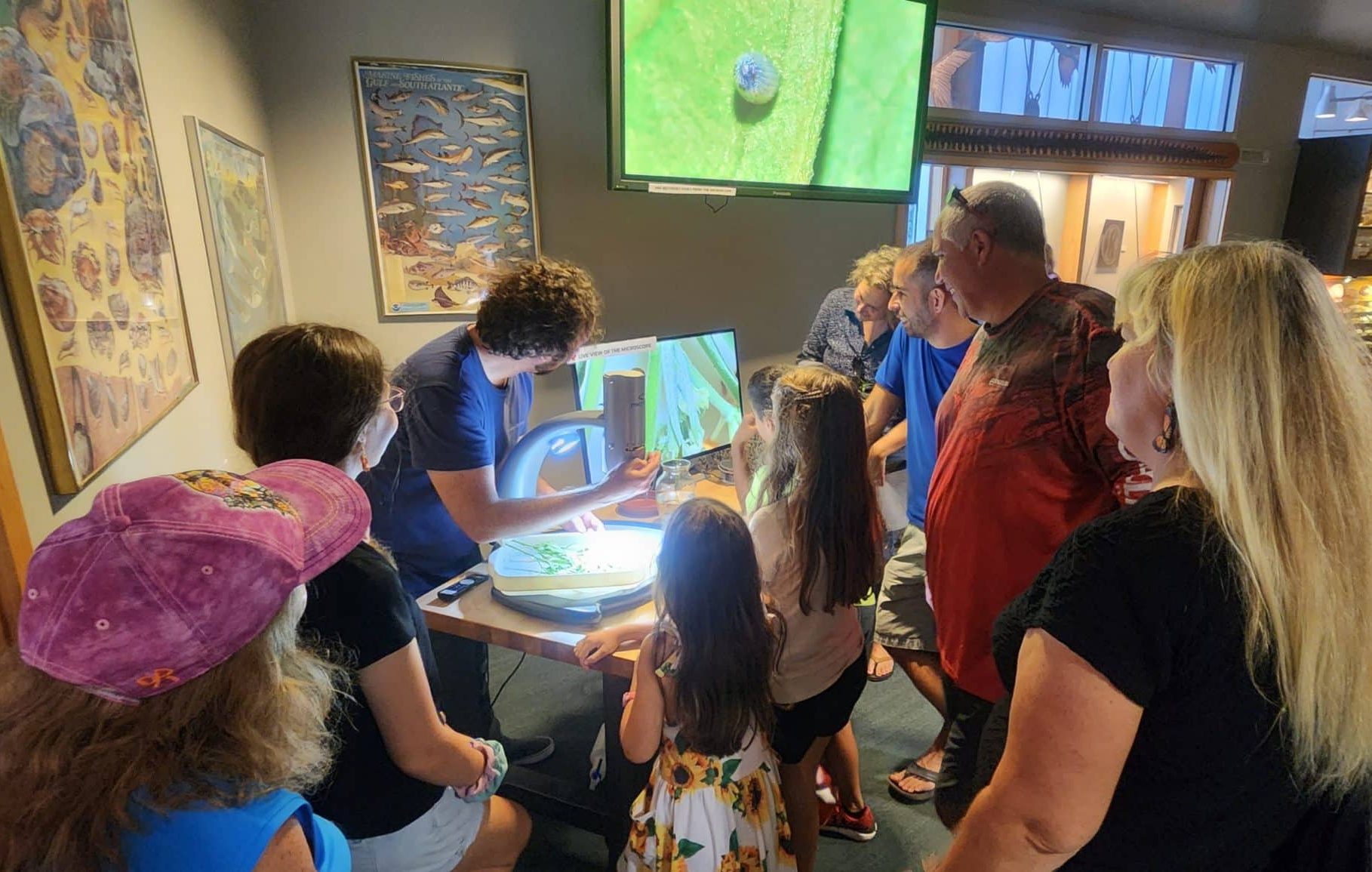
Florida Seafood Festival
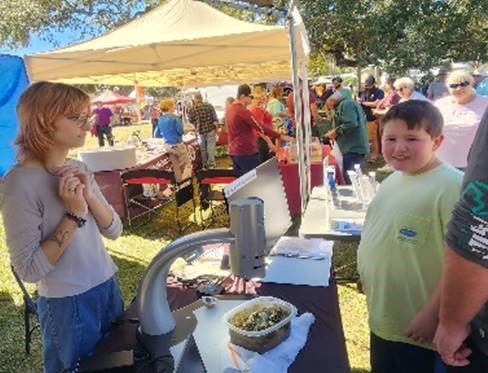
The Reserve staff participated in the 60th annual Florida Seafood Festival on November 3-4th. The oldest maritime festival in the state, the Florida Seafood Festival attracts upwards of 30,000 visitors to the small northwestern Florida community of Apalachicola. Equipped with its high-powered MicroEye microscope and a small section of oyster reef, Reserve staff shared the story of the important role oysters play in Apalachicola Bay. Hundreds of visitors were able to see how oysters provide shelter and food for an abundance of species.
The Forgotten Coast Conservation Corps shared Reserve’s booth and featured marsh grass from their living shoreline nursery, and they talked with festival-goers about the living shorelines they are constructing in Franklin County. The Corps also served samples of fresh oysters grown via aquaculture by the Rattlesnake Cove Oyster Company.
In addition, the Reserve coordinated the non-profit area which also included booths for the FSU Marine Lab, the Apalachicola Bay Systems Initiative booth, and the Franklin 98 shoreline restoration project that is implementing a living shoreline along US Highway 98 in Franklin County.
Workshop Held with the Realtors Association of Franklin and Gulf Counties
Coastal Training Program staff met with 14 realtors from Franklin and Gulf counties. They gave an overview at the association headquarters illustrating the programs the Reserve offers to new residents such as our popular Stewardship Serise that explores the Apalachicola River and Bay, and Bay-Friendly Landscaping, Living Shorelines, Oyster Ecology. The realtors also learned more about the Apalachicola River watershed and its connected ecosystems, the health of the river and bay, and information about the status of oysters in the bay. The workshop was followed with a 2.5-hour trip up the river on the Reserves research vessel the Tideline.
A needs assessment was developed in the form of a questionnaire. Information was gathered on what type of resources the Reserve can provide realtors in our community. With this assessment CTP can work towards building programs to provide resources to realtors to help better meet their and their client’s needs and answer their environmental questions. Topics of interest include information about area ecology, flood zones and FEMA regulations, living shorelines, risk communication, water quality and harmful algal blooms. Other Reserves in the NOAA National Estuarine Research Reserve system are offering classes on topics relevant to realtors.
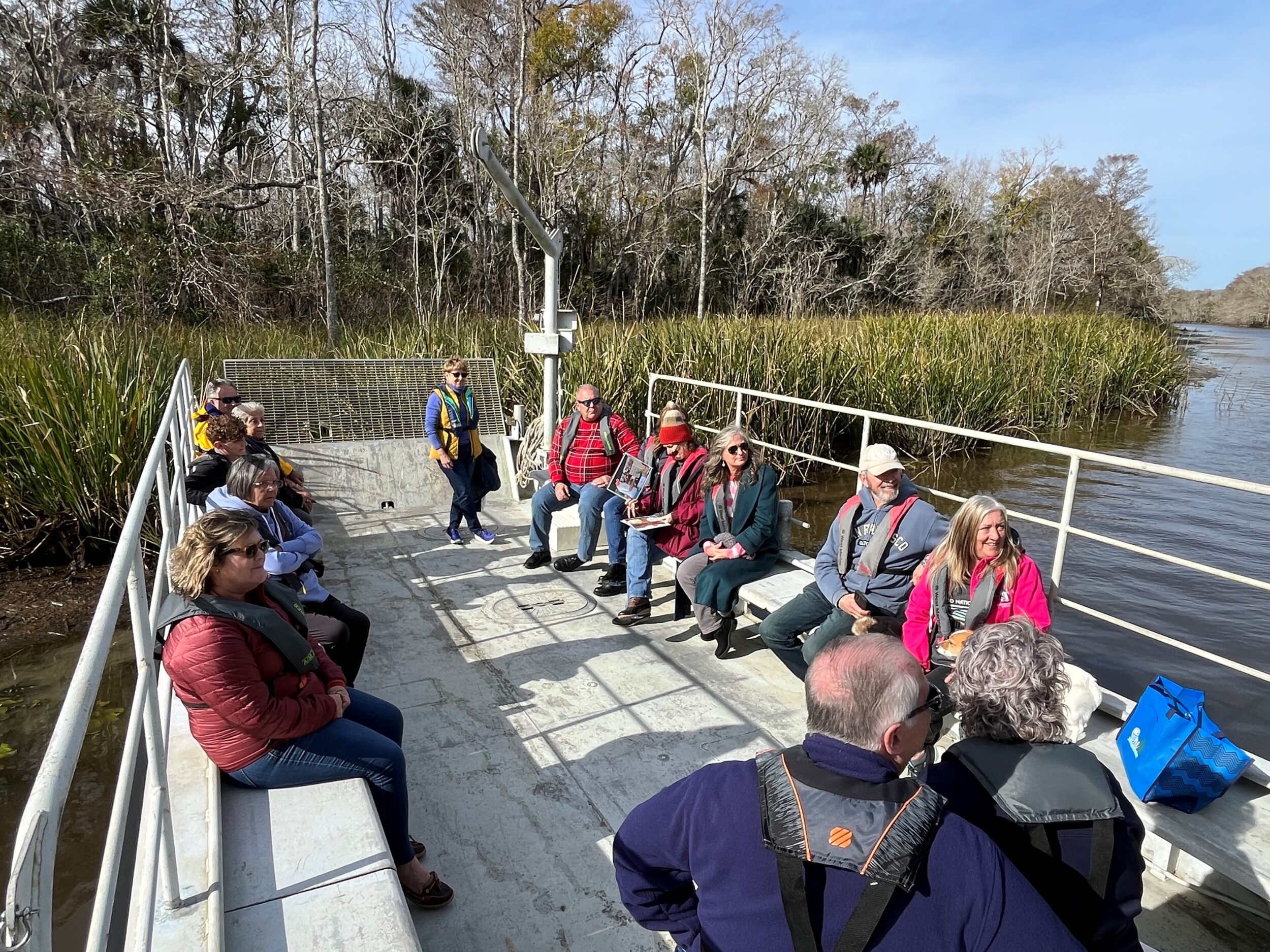
Stewardship Staff Kick off Fire Season
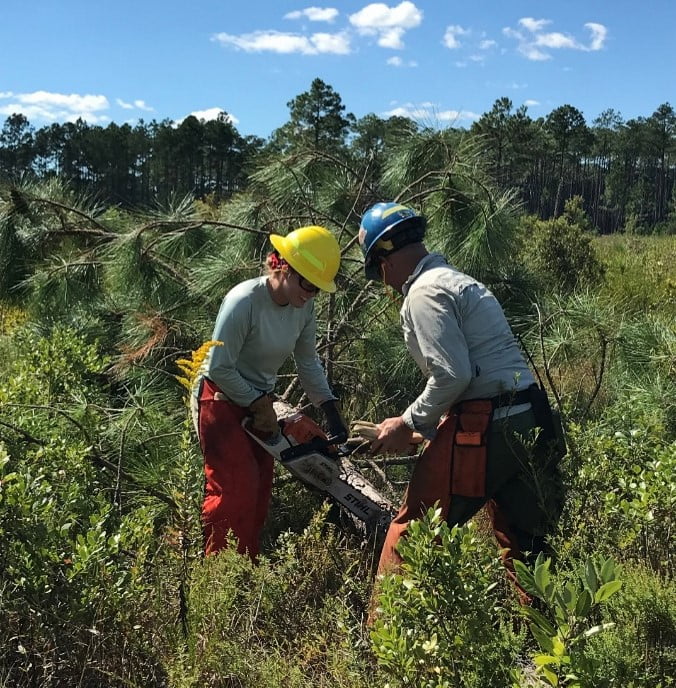
Stewardship staff at ANERR are preparing for fire season! In October new staff member Bekah Keller and intern Wallace Walker participated in Basic Wildland Fire training. All stewardship staff also participated in S-212 Wildland Fire Chainsaw training, learning to safely use and maintain chainsaws, and have completed annual pack tests and fire shelter training. Stewardship staff are members of the ANERR-St. Joseph State Buffer Preserve burn team and assist with prescribed fire and wildfires at the two offices and with partners. In addition to direct fire applications, these skills will expand staff abilities to maintain trails and fire lines in ANERR’s managed areas.
In November, ANERR and St. Joe Buffer Preserve staff conducted a prescribed fire on Little St. George Island. Burn goals for this land specifically include fuel reduction to reduce wildfire risk around the historic 1940’s Marshall house and barns and to promote ecosystem health. Throughout winter and spring, staff will conduct priority burns in managed areas, conduct other fire mitigation activities such as vegetation reduction, and assist partners with prescribed fires.
Sea Turtle and Shorebird Nesting Season Wrap-Ups at ANERR
In 2023 ANERR staff and interns marked 202 loggerhead and 11 green nests on Little St. George Island, for a total of 213 nests; this compares to 184 recorded nests in 2022. Nest inventories counted 9910 loggerhead and 370 green hatchlings emerging from these nests, slightly above 2022 productivity. Two loggerhead nests were also documented on Carrabelle Beach in 2023. Biggest negative impacts to the nests in 2023 were wash over and wash outs, mostly from the storm surge resulting from Hurricane Idalia at the end of August.
Shorebird season was productive across ANERR’s managed areas, which include the old St. George Island bridge causeway, L-Bar oyster spit by St. George Island, Bird Island by Apalachicola, and Little St. George Island. Highlights include 8 fledged American Oystercatcher chicks across areas. The Causeway produced many hundreds of Royal, Caspian, and Sandwich Tern and Brown Pelican Chicks. Little St. George had two Wilson’s plover families that successfully fledged 6 chicks and several Least Tern fledges, unfortunately Snowy Plover chick production was low and Black Skimmers were not successful at nesting attempts. American Oystercatchers, Black Skimmers, and Brown Pelicans are Florida Species of Special concern, and Least terns and Southeastern snowy plover are threatened. Coastal areas such as ANERR provide critical nesting and foraging habitats that are extremely important for the conservation of these species.

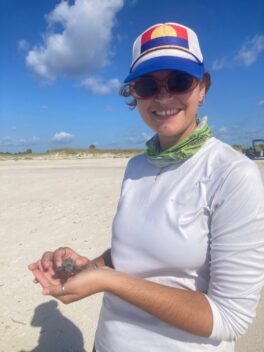
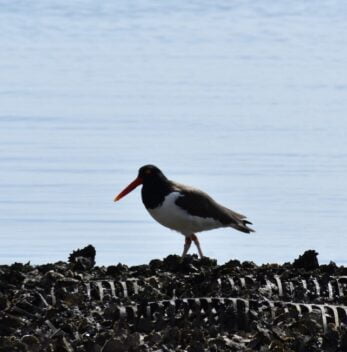
A B-oyster-ous Start to the New Year
Research staff will be kicking off the new year with intertidal oyster surveys in Apalachicola Bay. These surveys began in 2018 and occur each winter season. Unlike the subtidal oyster reefs that are typically submerged, intertidal oyster reefs live a more dynamic lifestyle – they are routinely exposed at low tide and submerged at high tide.
Three distinct areas are surveyed during a low tide, each taking about a day to complete. The intertidal oyster reefs are located near Little St George Island, St Vincent Island, and within St George Island State Park. Transects are established at sampled reefs with quadrats placed along its course at randomly selected points. Various measures such as reef height and thickness, percent cover, density of oyster clusters, and presence of predators and other fauna are recorded.
Although these intertidal reefs are not commercially important in Apalachicola Bay, they are still an important part of the ecosystem. Oyster reefs provide habitat for many species, function as a natural filter, and even help to stabilize shorelines and reduce erosion.
In other oyster-related news Research Coordinator, Jason Garwood, assisted in the publication of a scientific paper titled “Stark differences in spatial gradients of Eastern oyster (Crassostrea virginica) productivity in two Florida, USA, estuaries” in the journal Estuarine, Coastal and Shelf Science. The study focused on Apalachicola Bay and an area along the Atlantic Coast within the Guana Tolomato Matanzas National Estuarine Research Reserve.
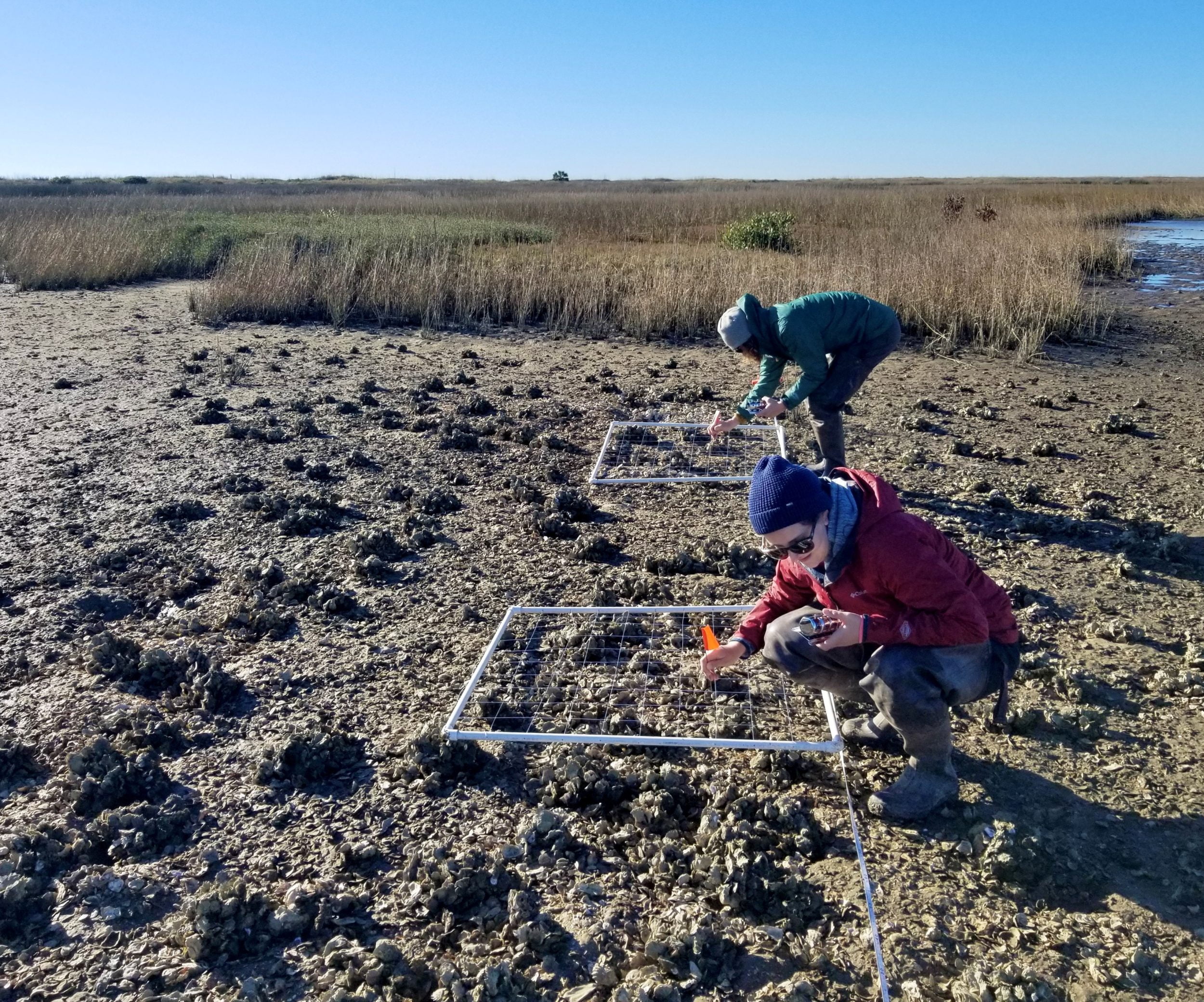

Upcoming Events
February
Bay-Friendly Landscaping Workshop, Feb. 27
ANERR Research Symposium, Feb. 29 & Mar. 1
March
Oyster Ecology Workshop, Mar. 6
Apalachicola River & Floodplain Exploration, Mar. 8
Apalachicola Estuary Exploration, Mar. 15
Bay-Friendly Landscaping Workshop, Mar. 19
Sci-Cafe: Prescribed Burns, Mar. 28 (keep a look out for the link on our events page)
April
Apalachicola River and Floodplain Exploration, Apr. 5
Oyster Ecology Workshop, Apr. 10
Bay-Friendly Landscaping Workshop, Apr. 16
Apalachicola Estuary Exploration, Apr. 19
May
Estuaries Day, May 3
Sci-Cafe, May 23
